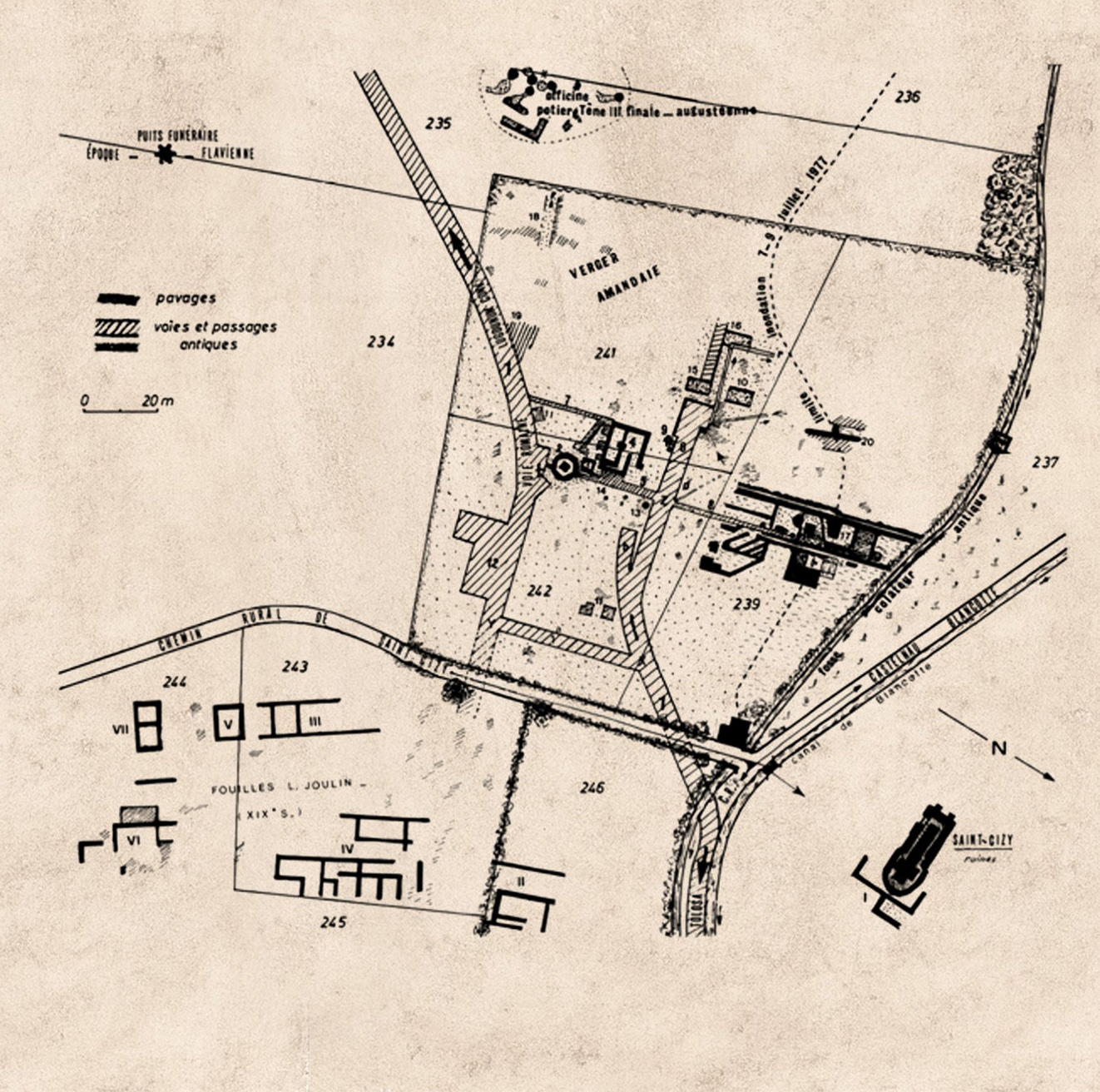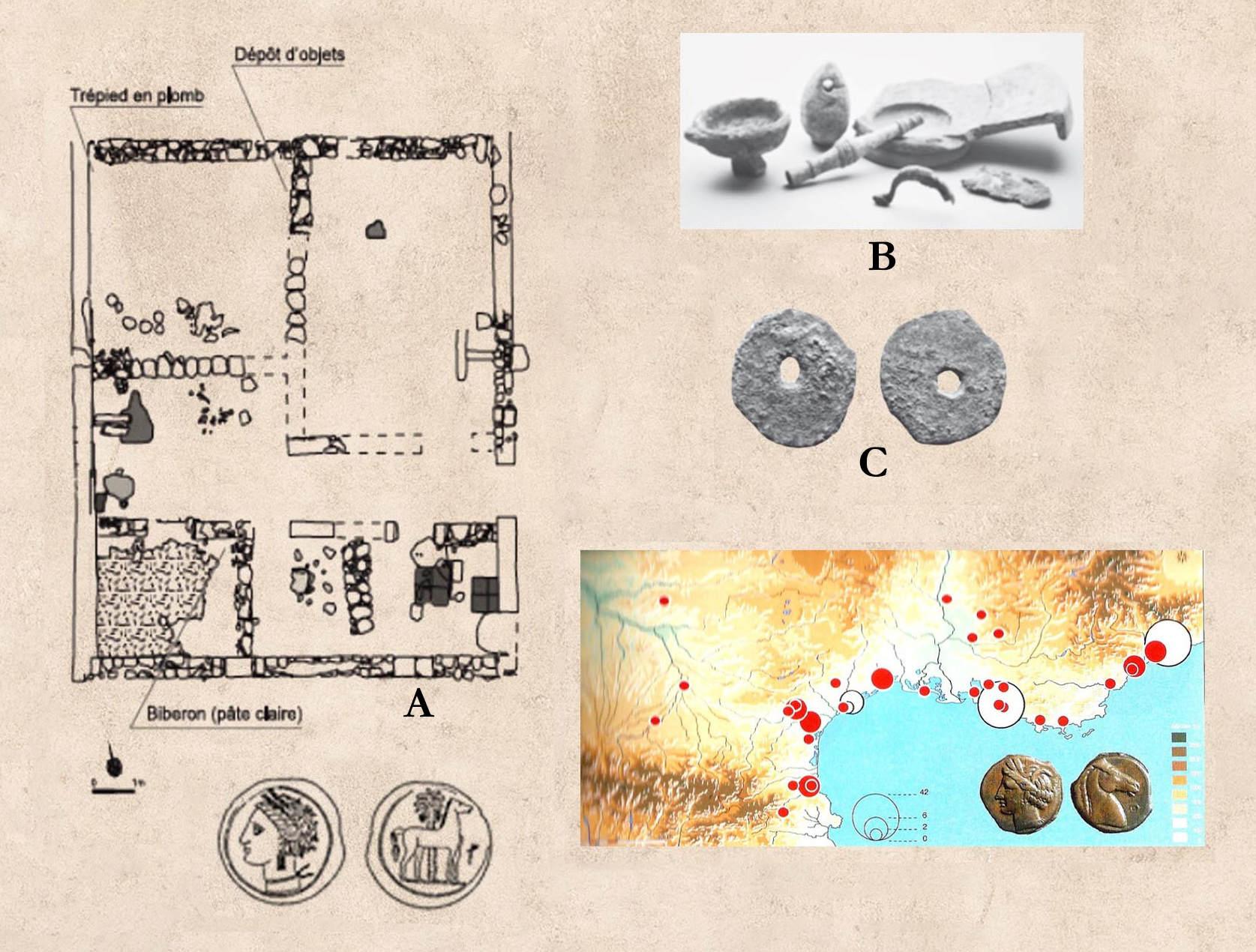Documentation referring to the offering of Punic coins in votive deposits is scarce and often difficult to interpret, also due to the difficulty of distinguishing information on the presence of coins as ‘foundation offerings’ and ‘foundation deposits’. The often sketchy recording of the typology and position of the coins in sacred or civil contexts, in fact, makes it problematic to define their role and significance in relation to the possible ritual followed.
Image Captions :
Fig. 1 : Civil votive deposit in a dwelling : Cazères (Haute-Garonne) – 1 AE SNGCop 94-97 de 2,56 g, coin found in the foundation of a building square from the Gallo-Roman era with one half of an axis of Nimes with Augustus/Agrippa (27 B.C. – 14 AD). Probably an agricultural plant that fell into disuse during the course of the third century. A.D.
Fig. 2 : Civil deposit. A) In the < ilot VI > in the central house a foundation deposit was found under a wall. It was found in the deposit a very worn but legible holed coin D/ Head of Core R/ standing horse with palm behind. Mid 4th Century B.C. B) Deposit in a domestic context, Olbia de Provence (Hyeres, Var), Fourth century A.D. C) the fact of having perforated the currency can be interpreted as a defunctionalization of it which makes any fiduciary use impossible, perhaps precisely with a view to its ritual deposit.


